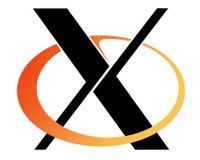I was listening to The Linux Cast podcast, and one of the guys uses OpenBSD and incorrectly stated that OpenBSD had forked X.Org. They use Xenocara, which is based on X.Org 7.7, but they say it’s not a fork and follow X.Org, implementing their patches. And the unique patches they do to the system for OpenBSD they submit upstream if applicable. Consequently, The Linux Cast guys were talking about Wayland vs. X.Org, and they were downplaying big tech being behind Wayland and calling people that want to stay with X.Org as Wayland haters, irrational… and most used Wayland currently. They had no depth on the security issues or limitations of Wayland for developers, just the tech news talking points of Wayland being newer, leaner, more secure, and that X.Org is just old code. A lot of what we run with Linux systems is old, and that doesn’t mean it’s bad or problematic. Consequently, I unfollowed the podcast as I couldn’t take those guys very seriously. I’d imagine that Xenocara will probably switch to XLibre after a while.
 | + |  | = Xenocara |
About Xenocara
Xenocara is the name chosen for the version of X included in OpenBSD. It is currently based on X.Org 7.7 and its dependencies.
The goal of Xenocara is to provide a framework to host local modifications and to automate the build of the modular X.Org components, including 3rd party packages and some software maintained by OpenBSD developers. It is not a fork. We are tracking X.Org modifications and try to push back our changes whenever they are good for upstreams too.
To learn more about Xenocara, read this old article on Undeadly or listen to that BSD Talk interview.
Status of the OpenBSD graphics stack at X developer’s conference 2014.
Official binary snapshots are available as part of OpenBSD-current for most architectures.
The source code can be browsed using OpenBSD’s cvsweb server.